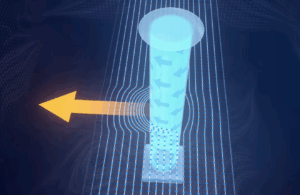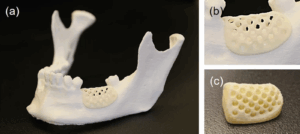Diving into the creation and functionality of living cyborgs in the world
When someone mentions cyborgs, you probably imagine a full body of metal resembling a robot from a Sci-Fi movie like Automata or Chappie. While this technology may still seem unattainable, the truth is that humanity’s technological advancements have already partially brought the fantasy of cyborgs to life. Although the cyborgs are not the same as the destruction-bringing weapons from Sci-Fi movies, in our world, there are already several humans harnessing personalized technology to improve their lives (1).
One of the world’s most famous “cyborgs”—and the first ever cyborg—is Neil Harbisson. Harbisson is an artist who was born with achromatopsia, or extreme color blindness, meaning he could only see in black and white. Harbisson has an antenna implanted in his head as another “organ” for his body, which modifies and changes his perception of reality. The camera on the antenna sees colors and then turns them into sound. It then transmits the vibrations to his skull, allowing him to recognize colors (3).
Another famed cyborg is Jesse Sullivan, who suffered a life-threatening accident due to severe electrocution, resulting in the amputation of both his arms. Through a generous offer by the Rehabilitation Institute of Chicago, Sullivan had both arms replaced with robotic prosthetics through bionic limb connecting and nerve-muscle grafting (3). Sullivan had a computer in his forearm wired to the mechanical hand and a “plunger” device on his chest. The prosthetic hand sends signals to the plunger that stimulate his chest nerves to transmit sensations as if his nerves were connected to the hand. Through the prosthetics, Sullivan can feel temperatures and complete simple movements with his arm and hand (4).
Over the last few decades, the technology of prosthetic limbs has developed significantly due to the new methods and resources available. The increased accessibility of 3D printing and other technological advancements have helped prosthetics reach the world (2). Recently at MIT, researchers revealed a surgical technique that allows the brain to receive feedback from prosthetic limbs. Using muscle grafts from other parts of the body, the MIT team was able to pair the muscles, allowing the brain to communicate with the new limb. Similarly, there are many other techniques, such as implanting an array of electrodes below a spinal cord injury, to create an artificial link between the body and the brain (1).
Given these remarkable examples of technological advancements enabling cyborgs to exist today, the line between the reality and the fiction of cyborgs becomes increasingly blurred. However, there are still many people who fear technological advancements due to the possibility of technology overtaking the world and human minds. While there may be questions around the ethical implementations and potential benefits of these cyborg advancements, it’s evident that technology and machinery will shape the future of human potential.
Bibliography:
- Towers-Clark, C. (2018, October 3). Cyborgs Are Here And You’d Better Get Used To It. Forbes. Retrieved from https://www.forbes.com/sites/charlestowersclark/2018/10/01/cyborgs-are-here-and-youd-better-get-used-to-it/?sh=2fbeec1c746a
- Marks, L. J., & Michael, J. W. (2001). Science, medicine, and the future: Artificial limbs. BMJ. British medical journal (Clinical research ed.), 323(7315), 732–735. BMJ. Retrieved from https://www.ncbi.nlm.nih.gov/pmc/articles/PMC1121287/
- The World’s Most Famous Real-Life Cyborgs. (2017, June 22). The Medical Futurist. Retrieved from https://medicalfuturist.com/the-worlds-most-famous-real-life-cyborgs/
- News, A. (2005, June 30). Man With $6 Million “Bionic” Arm. ABC News. ABC News. Retrieved from https://abcnews.go.com/GMA/OnCall/story?id=895590















Comments are closed.